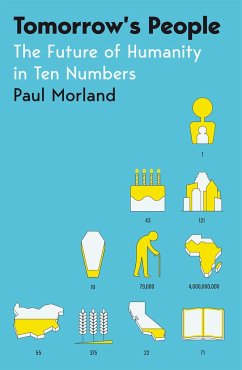TOMORROW'S PEOPLE is a brilliantly mind-expanding and original investigation of the twenty-first century, looking at twelve key population trends. It argues that the human race is now entering an unprecedented fifth demographic transition, which Morland calls post-modern demography, in which beliefs have more power over populations than material conditions. Put simply, in a world of declining birth rates, it matters a great deal that religious social conservatives have more children than secular liberals (just look at the transformation of Israeli population and politics by the fact that the orthodox have six times moire children than the secular). This is illuminated by the story of ten unique data points, each of which demonstrates a mega-trend that casts new light on how the world is changing. These are: NINETEEN: The infant mortality rate per thousand in Peru FOUR BILLION: The population of Sub-Saharan Africa by 2100 ONE HUNDRED: Chinese cities with a population of more than a million ONE: Singapore's fertility rate FORTY-THREE: The median age in Catalonia SEVENTY THOUSAND: The number of Japanese people aged over 100 FIFTY-FOUR: The percentage decline in Bulgaria's population over a century TWENTY-THREE: The percentage of Californian school children who are white NINTEY-FOUR: The literacy rate per hundred among young Bangladeshi women SEVEN: The annual percentage growth in Ethiopian wheat production over the past twenty-five years








